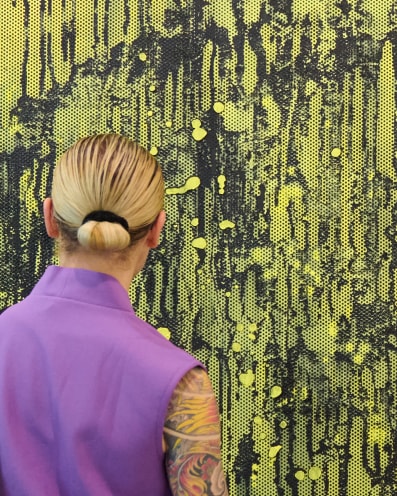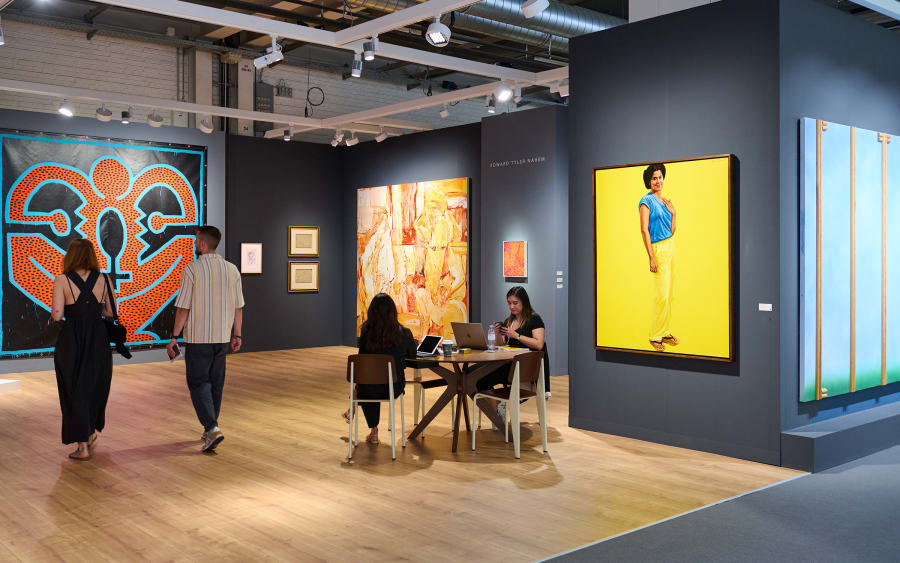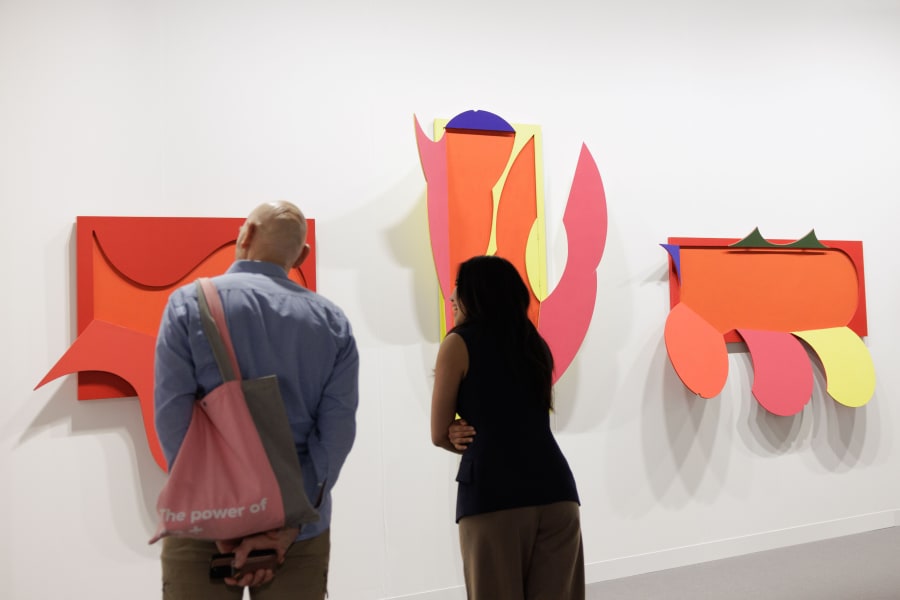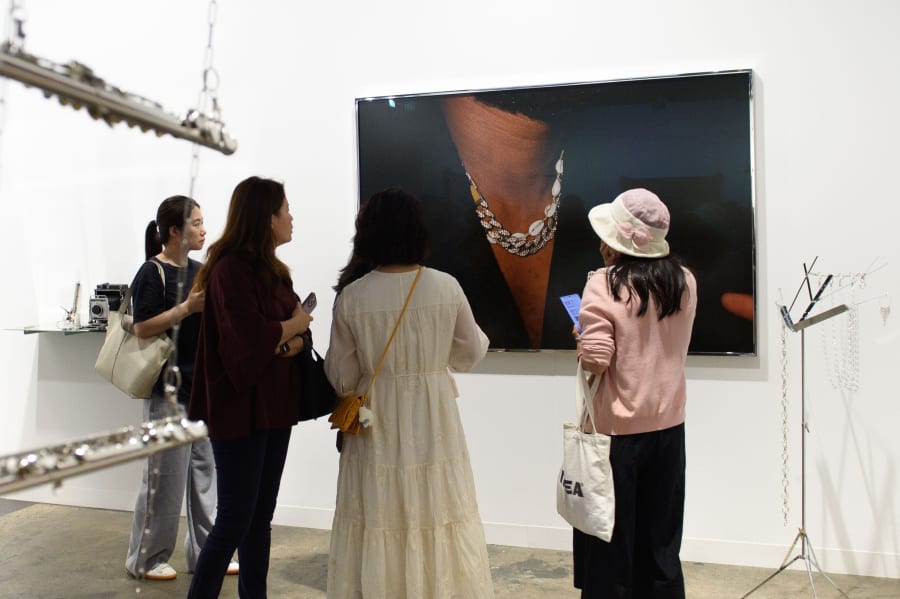
How to collect with purpose
In Part 1 of ‘Collecting Today’, a two-part series exploring the work of UBS Art Advisory, Brian Boucher speaks to advisors about the evolution of its clients’ taste and focus

How to collect with purpose
In Part 1 of ‘Collecting Today’, a two-part series exploring the work of UBS Art Advisory, Brian Boucher speaks to advisors about the evolution of its clients’ taste and focus

How to collect with purpose
In Part 1 of ‘Collecting Today’, a two-part series exploring the work of UBS Art Advisory, Brian Boucher speaks to advisors about the evolution of its clients’ taste and focus

How to collect with purpose
In Part 1 of ‘Collecting Today’, a two-part series exploring the work of UBS Art Advisory, Brian Boucher speaks to advisors about the evolution of its clients’ taste and focus

How to collect with purpose
In Part 1 of ‘Collecting Today’, a two-part series exploring the work of UBS Art Advisory, Brian Boucher speaks to advisors about the evolution of its clients’ taste and focus
It’s no secret that the art market is in a prolonged period of uncertainty. In the 2025 Art Basel & UBS Global Art Market Report, Art Basel CEO Noah Horowitz noted ‘continued headwinds,’ with sales declining by 12% in the second year of a downturn. And yet, there also continues to be strong buying activity: The latest Art Basel fair in Switzerland saw robust demand across all price points. How can we take the temperature of the art market given these conflicting signals? What are collectors looking for at this moment of global unrest, marked by conflict and unstable markets?
‘I tend to discount talk about geopolitical uncertainty as it relates to the art market,’ says Matthew Newton, Senior Art Advisory Specialist in Family Office Solutions at UBS. ‘But in this particular case, I think it is starting to impact the art market. There is truly so much uncertainty and volatility around economic policy that it starts to impact your decisions,’ even when, as he puts it, ‘the wealthy are as wealthy as they’ve ever been.’
Even if US tariffs might not directly impact art, comments Eric Landolt, Head Family Advisory, Art & Collecting at UBS, ‘they play into buying decisions in their impact on the broader market.’ In Newton’s view, we may be seeing a ‘bottoming’ of the market. The speculative fervor of the peak market of 2022 is certainly behind us, he says, ‘but I also don’t feel like things are getting worse.’
Those looking to UBS for guidance on collecting, points out Carola Wiese, Senior Art Advisory Specialist at UBS, ‘will collect in any market circumstance.’ A new generation of buyers from Asia are particularly ‘bullish,’ she observes – 'and they have a plan and a strategy.’ Collectors at Art Basel Hong Kong in March and Art Basel in Switzerland in June, explains Landolt, ‘were looking for the highest quality of pieces, and they will consider buying even if the environment is a bit more difficult.’
Did art prices simply rise too high?
This complex environment has led to much discussion about art pricing, with some market observers suggesting that in a time of lessening demand, art prices might have to actually fall – a tricky proposition when price closely correlates to artistic value. ‘We work with collectors across the range of experience levels, and there are a lot of questions about the logic behind the pricing of art,’ says Newton. ‘I try to have conversations with our clients that revolve more around value than price.’
Prices can be confusing, even to the experts. In this context, Newton cites After Embah, a 2018 painting by South African-born, London-based mid-career artist Lisa Brice, which fetched £5.4 million (USD $6.8 million) at Sotheby’s, London, in March, setting an artist record. At the same time, pictures by major art historical figures like French Impressionist Pierre-Auguste Renoir might go for a fraction of that. His canvas La leçon d’écriture (c. 1905) sold for €2.4 million (USD $2.6 million) at Christie’s, Paris, in April.
But prices aren’t simply arbitrary, Wiese points out. ‘Costs to run gallery operations and for logistics and shipping, for example, have gone up considerably,’ she explains, ‘and the effect of this is not to be underestimated.’ These costs play an ‘important’ role for galleries, she says, especially smaller ones that may need to raise prices to account for them – to the extent that on occasion she has to ‘console’ her clients over prices. Galleries have become creative, she adds, sometimes finding studio space for artists to create work in proximity to an upcoming gallery show or art fair so as to reduce shipping costs.
To impose some rationality on prices, Landolt points out, the collectors UBS works with do a great deal of research – consulting auction price databases where available, as well as comparing notes with their advisors and even their friends. ‘They’re not willing to just take any price,’ he says.
Newton shares that contemporary art prices are perceived to have risen too high, too fast, and that has sent some collectors looking to historical sectors where prices may be more rational.‘Collectors are realizing that there is a lot of historical material to be rediscovered,’ says Wiese, including artists from recent decades as well as further back. ‘I’m seeing a shift in curatorial themes, namely more and more exhibitions that show older and rediscovered artists alongside contemporary ones.’ As an example, she cites the ‘beautiful’ exhibition, ‘Medardo Rosso – Inventing Modern Sculpture,’ on view at Kunstmuseum Basel through August 10, 2025, which shows the Italian sculptor (1858–1928) alongside contemporary figures ranging from Lynda Benglis to David Hammons.
Both newer and more experienced collectors find affordable works shopping by medium. Prints and multiples as well as editioned photographs, the UBS experts explain, provide top-quality work at appealing price points.
Buying with purpose
Collectors are also looking to artworks that engage with the issues of our time. Art always reflects its historical moment, Landolt points out. They not only want to correct historical imbalances in the market weighing against female artists and artists of color in a moment of increasing calls for social justice, the UBS advisors agree; they also are drawn to art that addresses urgent issues head-on. ‘Women want to tell a different story’ with their collections, focusing on sometimes neglected female artists, notes Newton.
Similarly, Wiese relates that one person she spoke to during Art Basel Hong Kong is buying works with a mind to supporting educational causes, specifically by lending to schools. ‘There are other collectors too, who focus on artworks that they immediately send on loan to a good cause, like a hospital,’ she adds. ‘Mental health is a big topic. This cannot be underlined enough.’
Wiese further observes a taste for artworks addressing under-represented issues like motherhood. Collectors also look very positively on art tackling topics like the environment and climate, Landolt says. ‘It speaks to them.’
Wiese visibly lights up when discussing the notion of collecting with purpose, saying, ‘If you can combine collecting with a noble cause and supporting under-recognized artists – how cool is that?’
UBS Art Advisory offers insight into the complexities of art collecting and stewardship. Find out more about UBS and Art here.
Brian Boucher is a writer and art market commentator based in New York City.
Caption for top image: a visitor in front of a work by Jacqueline Humphries, presented at Art Basel in Basel 2025 by Modern Art.



